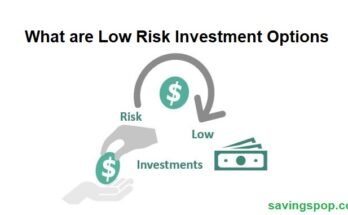A baseline budget is an initial monetary plan that outlines expected sales and fees for a selected period. By organizing a baseline price range, groups can display and control expenses, discover variances, and make informed economic selections. These finances serve as a reference factor to examine actual economic performance in opposition to projected figures. With baseline finance, groups can set realistic desires, song development, and adjust techniques to stay on course. It is a crucial device for effective economic management, ensuring resources are allocated efficaciously and goals are met within the exact timeframe.
Components of a Baseline Budget
Fixed Costs
Fixed costs are expenses that do not change regardless of the project’s progress or duration. These include salaries, rent, insurance, and other recurring expenses. For example, if a project requires office space, the rent for that space is a fixed cost that remains constant every month.
Variable Costs
Variable costs fluctuate based on the level of project activity. These can include materials, utilities, and hourly labor. For instance, the cost of raw materials in a manufacturing project can vary depending on production levels.
One-Time Expenses
One-time expenses are incurred only once during the project’s lifecycle. These might include equipment purchases, initial setup costs, or specific consultancy fees. For example, buying specialized software for a project is a one-time expense.
Examples
- Construction Project: Fixed costs might include the project manager’s salary and site rent, variable costs could be construction materials, and one-time expenses might involve buying heavy machinery.
- IT Project: Fixed costs could encompass software licenses and team salaries, variable costs might be server usage, and one-time expenses could involve initial hardware setup.
Steps to Create a Baseline Budget
Creating a baseline budget involves several key steps:
Gathering Necessary Data
Collect historical financial data, market analysis, and project requirements. This data helps in making accurate estimations.
Analyzing Past Performance
Review past projects to identify trends and patterns. This analysis aids in setting realistic budget estimates based on previous experiences.
Forecasting Future Needs
Predict future financial needs by considering potential changes in market conditions, resource availability, and project scope.
Establishing Baseline Figures
Set initial budget figures for each category of costs. This involves detailed planning and precise calculations.
Setting Budget Limits
Define limits for each cost category to prevent overspending. These limits serve as control measures to ensure financial discipline.
Importance of Baseline Budget in Project Management
Tracking Project Performance
A baseline budget allows project managers to track actual performance against planned performance. This tracking helps in identifying variances and taking corrective actions promptly.
Identifying Variances
By comparing actual costs with the baseline budget, managers can detect variances early. This identification is crucial for addressing issues before they escalate.
Managing Project Risks
A well-defined baseline budget helps risk management by providing a financial cushion for unexpected expenses. It ensures that the project remains on track even when unforeseen events occur.
Case Studies
- Construction Industry: A construction firm completes a complex project by adhering to a baseline budget. They tracked expenses diligently, identified variances early, and managed risks effectively.
- IT Sector: An IT company delivered a major software project within budget by using baseline budgeting techniques. They monitored costs closely and adjusted their strategies based on real-time data.
Tools and Techniques for Baseline Budgeting
Software Tools
Numerous software tools are available to aid in creating and managing baseline budgets. Examples include Microsoft Project, Primavera, and specialized budgeting software like QuickBooks.
Techniques
- Rolling Wave Planning: This technique involves detailed planning for the near term and high-level planning for the distant future. It allows for flexibility & adjustments as the project progresses.
- Earned Value Management (EVM): EVM integrates project scope, cost, and schedule measures to help project managers assess performance and progress. It offers a thorough understanding of the project’s health.
Challenges in Creating and Maintaining a Baseline Budget
Common Obstacles
- Inaccurate Estimates: Poor estimation can lead to unrealistic budgets.
- Scope Creep: Uncontrolled changes in project scope can inflate costs.
- Resource Constraints: Limited resources can hinder budget adherence.
Strategies to Overcome Challenges
- Detailed Planning: Invest time in thorough planning to improve estimate accuracy.
- Change Control Processes: Implement strict change control processes to manage scope changes.
- Resource Management: Optimize resource allocation and utilization to stay within budget.
Comparing Baseline Budget to Other Budget Types
Baseline Budget vs. Zero-Based Budget
A baseline budget builds on previous budgets and adjusts for changes, whereas a zero-based budget starts from scratch, justifying each expense anew.
Baseline Budget vs. Flexible Budget
A baseline budget remains fixed, providing a stable reference point. In contrast, a flexible budget adjusts based on actual activity levels, offering more adaptability.
Situational Effectiveness
- Baseline Budget: Best for projects with predictable costs and stable environments.
- Zero-Based Budget: Ideal for organizations seeking to minimize unnecessary expenditures.
- Flexible Budget: Suitable for dynamic projects with variable activity levels.
Real-World Applications and Examples
Construction Industry
Construction projects often use baseline budgets to manage complex and long-term undertakings. For example, a multi-year infrastructure project would rely on a baseline budget to track progress and control costs.
IT Sector
In IT projects, baseline budgets help manage software development processes, ensuring that projects stay within financial constraints while meeting technical requirements.
Manufacturing
Manufacturing companies use baseline budgets to control production costs and optimize resource allocation. For instance, a car manufacturer might use a baseline budget to manage the production of a new model.
Future Trends in Baseline Budgeting
Emerging Technologies
Technologies like artificial intelligence and machine learning are revolutionizing baseline budgeting. These technologies enable more accurate predictions and real-time adjustments, enhancing budget management.
Increased Automation
Automation tools are streamlining the budgeting process, reducing manual effort, and minimizing errors. These tools are making baseline budgeting more efficient and reliable.
Predictive Analytics
Predictive analytics is becoming a key component of baseline budgeting. By analyzing historical data and market trends, predictive analytics provides deeper insights, helping managers make informed decisions.
Integration with Other Financial Tools
Integration of baseline budgeting tools with other financial management systems is on the rise. This integration facilitates seamless data flow and comprehensive financial analysis, improving decision-making processes.
Detailed Analysis of Baseline Budget Components
Fixed Costs
Fixed costs are consistent expenses that do not vary with the level of production or service delivery. Examples include salaries of permanent staff, office rent, and insurance premiums. These costs are critical for maintaining operational stability and ensuring continuous project progress.
Variable Costs
Variable costs, unlike fixed costs, fluctuate with the level of project activity. These include costs for raw materials, utilities based on usage, and hourly wages. Managing variable costs effectively requires careful monitoring and adjustments based on project demands and market conditions.
One-Time Expenses
One-time expenses are unique to certain phases of the project and are not recurring. Examples include the purchase of specialized equipment, initial setup fees, or consultant charges. Properly accounting for these expenses is crucial for maintaining budget accuracy.
Practical Examples in Various Industries
- Healthcare: Fixed costs might include the salaries of medical staff and facility rent, variable costs could involve medical supplies and utilities, while one-time expenses might cover the installation of new medical equipment.
- Education: Fixed costs could encompass staff salaries and building maintenance, variable costs might be classroom supplies and electricity, and one-time expenses could involve technology upgrades or new curriculum development.
Steps to Create a Baseline Budget
Gathering Necessary Data
Collecting accurate and relevant data is the foundation of a reliable baseline budget. Data sources include financial records, market research, industry benchmarks, and expert consultations. Methods for gathering data include surveys, interviews, and historical data analysis.
Analyzing Past Performance
Past performance analysis involves reviewing previous projects to identify cost patterns and performance trends. Techniques such as trend analysis, variance analysis, and tools like spreadsheets and specialized software are commonly used to facilitate this process.
Forecasting Future Needs
Forecasting involves predicting future financial needs based on various factors, including market trends, resource availability, and potential risks. Best practices include scenario planning, sensitivity analysis, and using forecasting software to enhance accuracy.
Establishing Baseline Figures
Establishing baseline figures requires precise calculations and thorough planning. This involves defining cost categories, estimating costs for each category, and setting initial budget figures based on these estimates. Tools like cost estimation software and financial modeling can aid in this process.
Setting Budget Limits
Setting budget limits involves defining maximum allowable expenditures for each cost category. Techniques for setting budget limits include top-down budgeting, where limits are set based on overall financial goals, and bottom-up budgeting, where limits are based on detailed cost estimates from project components.
Importance of Baseline Budget in Project Management
Tracking Project Performance
Tracking project performance involves monitoring various metrics and indicators, such as actual costs versus budgeted costs, schedule adherence, and resource utilization. These metrics help project managers assess progress and make informed decisions.
Identifying Variances
Variance identification involves comparing actual performance with the baseline budget to detect deviations. Methods for identifying variances include variance analysis, trend analysis, and using financial software for real-time monitoring. Responses to variances involve corrective actions such as reallocation of resources, adjusting project scope, or revising schedules.
Managing Project Risks
Managing project risks involves identifying potential risks, assessing their impact, and developing mitigation strategies. A baseline budget provides a financial framework for risk management by allocating contingency funds and setting aside reserves for unexpected expenses.
Case Studies
- Construction Industry: A construction firm used baseline budgeting to manage a large infrastructure project. They tracked expenses meticulously, identified cost overruns early, and implemented corrective actions, resulting in project completion within budget.
- IT Sector: An IT company developed a new software application using baseline budgeting techniques. They monitored costs closely, adjusted their development strategies based on real-time data, and delivered the project on time and within budget.
Tools and Techniques for Baseline Budgeting
Software Tools
Modern software tools offer advanced features for creating and managing baseline budgets. These features include cost estimation, financial modeling, real-time tracking, and integration with other project management tools. The benefits of using software tools include increased accuracy, efficiency, and the ability to make data-driven decisions.
Techniques
- Rolling Wave Planning: This method involves planning in waves, in which specified plans are carried out for the near period and high-stage planning for the distant destiny. It allows for flexibility and changes because the challenge progresses, making it ideal for dynamic tasks.
- Earned Value Management (EVM): EVM integrates scope, value, and timetable measures to provide a comprehensive view of project overall performance. It involves calculating metrics which include Planned Value (PV), Earned Value (EV), and Actual Cost (AC) to assess assignment fitness and make informed decisions.
Challenges in Creating and Maintaining a Baseline Budget
Common Obstacles
- Inaccurate Estimates: Inaccurate estimates can cause unrealistic budgets, resulting in financial shortfalls and undertaking delays. Causes of misguided estimates include loss of historic statistics, inadequate studies, and unforeseen modifications in challenge scope.
- Scope Creep: Scope creep refers to out-of-control modifications in venture scope, that could inflate costs and make bigger timelines. It regularly happens due to insufficient assignment-making plans, bad conversations, and stakeholder needs.
- Resource Constraints: Limited resources, which include finances, personnel, and time, can avert financial adherence. Effective aid control involves optimizing useful resource allocation and making sure of green usage.
Strategies to Overcome Challenges
- Detailed Planning: Invest time in thorough planning to improve estimate accuracy. This includes conducting detailed research, consulting experts, and using advanced estimation techniques.
- Change Control Processes: Implement strict change control processes to manage scope changes. This involves establishing formal procedures for approving changes, documenting changes, and communicating changes to all stakeholders.
- Resource Management: Optimize resource allocation and utilization to stay within budget. Techniques for resource management include resource leveling, resource smoothing, and using resource management software.
Comparing Baseline Budget to Other Budget Types
Baseline Budget vs. Zero-Based Budget
A baseline budget builds on previous budgets, adjusting for changes and new information. It provides a stable reference point and is ideal for projects with predictable costs. In contrast, a zero-based budget starts from scratch, justifying each expense anew. It is useful for organizations seeking to minimize unnecessary expenditures and improve cost control.
Baseline Budget vs. Flexible Budget
A baseline budget remains fixed, providing a stable reference point for measuring performance. It is best suited for projects with stable environments and predictable costs. A flexible budget, on the other hand, adjusts based on actual activity levels, offering more adaptability. It is ideal for dynamic projects with variable activity levels.
Situational Effectiveness
- Baseline Budget: Best for projects with stable environments and predictable costs, such as long-term infrastructure projects and ongoing operations.
- Zero-Based Budget: Ideal for organizations seeking to improve cost control and minimize unnecessary expenditures, such as startups and companies undergoing restructuring.
- Flexible Budget: Suitable for dynamic projects with variable activity levels, such as research and development projects and seasonal businesses.
Real-World Applications and Examples
Construction Industry
Construction projects often use baseline budgets to manage complex and long-term undertakings. For example, a multi-year infrastructure project would rely on a baseline budget to track progress and control costs. Detailed case studies can illustrate how baseline budgeting has helped construction firms complete projects on time and within budget.
IT Sector
In IT projects, baseline budgets help manage software development processes, ensuring that projects stay within financial constraints while meeting technical requirements. Detailed examples can show how IT companies have used baseline budgeting to deliver successful projects and achieve their financial goals.
Manufacturing
Manufacturing companies use baseline budgets to control production costs and optimize resource allocation. For instance, a car manufacturer might use a baseline budget to manage the production of a new model. Detailed case studies can demonstrate how baseline budgeting has helped manufacturing firms improve efficiency and reduce costs.
Future Trends in Baseline Budgeting
Emerging Technologies
Technologies like artificial intelligence (AI) and machine learning (ML) are revolutionizing baseline budgeting. These technologies enable more accurate predictions, real-time adjustments, and enhanced budget management. Detailed analysis can show how AI and ML are being integrated into budgeting processes and the benefits they offer.
Increased Automation
Automation tools are streamlining the budgeting process, reducing manual effort, and minimizing errors. These tools are making baseline budgeting more efficient and reliable. Detailed examples can illustrate how automation is transforming baseline budgeting and improving financial management.
Predictive Analytics
Predictive analytics is becoming a key component of baseline budgeting. By analyzing historical data and market trends, predictive analytics provides deeper insights, helping managers make informed decisions. Detailed case studies can show how predictive analytics is being used to improve budget accuracy and project performance.
Integration with Other Financial Tools
Integration of baseline budgeting tools with other financial management systems is on the rise. This integration facilitates seamless data flow and comprehensive financial analysis, improving decision-making processes. Detailed analysis can explore the benefits and challenges of integrating baseline budgeting tools with other financial systems.
Conclusion
Baseline budgeting is a critical aspect of project management and financial planning. It provides a structured approach to tracking expenses, managing risks, and ensuring financial stability. By understanding and implementing baseline budgeting, organizations can enhance their project success rates and achieve their financial goals.
In this article, we have explored the definition, components, and importance of baseline budgeting. We have also discussed the steps to create a baseline budget, the tools and techniques available, and the challenges involved. Additionally, we compared baseline budgets to other budget types and examined real-world applications and future trends. By leveraging the insights and strategies shared in this comprehensive guide, you can effectively manage your projects and finances using baseline budgeting techniques.




